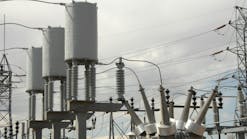Every day you read stories about the use of drones. The media tends to depict drones in a negative light, so most of those articles reference some horror story with a drone pilot using the technology irresponsibly. The truth is that drones can be incredibly powerful tools. To many utilities, this is still a frightening leap into the unknown. There seems to be a hesitation to embrace drones, perhaps due to perceived risks.
Burns & McDonnell has been working to advance the use of unmanned aerial vehicle (UAV) technology in the utility industry. Research and development began in 2012 to get an understanding of what the possible “use cases” of UAV technology could provide. We had some big questions that needed to be answered: Would the financial impact and workflow efficiencies provide an effective ROI? How do these methods compare to traditional methods for cost, resolution and accuracy? What are the risks involved?
UAV Value
Several months of investigation into the risks, rules and safety revealed there is a great benefit to embracing UAV technology. Although there were many hurdles to overcome to become federally compliant, we can now provide cost-effective solutions for aerial data capture. While we expected to find many practical deliverables from drones, the actual results were astonishing.
The value went far beyond a new method for taking aerial photographs. We could capture and create data to help workflows from project conception through O&M. Some benefits were obvious, including O&M inspections, high-resolution video, quality assurance/quality control of construction, safety monitoring, as-built condition and aerial photos. Other data sets were highly unexpected such as 3-D point clouds, 3-D digital surface models, orthomosaic imagery and surface contours.
Consider that all of these products came from a UAV constructed mainly of foam and carbon fiber weighing 1.6 pounds. All the data sets were derived from a single payload: a digital camera. Imagine sending up a small UAV with a digital camera and getting better results than a traditional aircraft. Now consider the ability to change out payloads allows you to incorporate various other remote-sensing data types such as near-infrared imagery for vegetation monitoring, four-band multispectral imagery for land use and wetland identification, and thermal imagery for hot spots and plumes.
What workflows can benefit from this technology? We have seen functional improvements in areas such as engineering design, wildlife monitoring, hot-spot detection, stakeholder management, construction status and vegetation management. Safety risks, special permitting and outages can be reduced by remotely inspecting towers in high-elevation situations. This can allow for a quick response to urgent issues. When all the factors are considered, the answer is quite clear: Drones offer a real value to the industry and will rapidly become an accepted field practice.
Does all this data come from just a few minutes in the air? When assessing the UAV project life cycle, the actual amount of time a UAV is in flight is only a small portion of the process. The benefits carry on far longer as both timely data and as a documented point in time. Post-processing procedures and sophisticated geospatial software packages play a significant role in the success of a UAV project. The result is a myriad of data sets that can be integrated into existing information systems and allow a utility to begin a documented historic view of infrastructure.
Will drones end the need for traditional aerial flights? While UAVs offer a significant cost benefit in many cases, there is a threshold at which traditional aerial data collection still makes economic sense. In a 200-mile corridor, traditional aircraft would be more efficient and cost-effective at completing the mission, largely because the Federal Aviation Administration (FAA) requires operations to be conducted within line of sight.
Commercial Use Limitations
A look at FAA regulations reveals many limitations. Currently, commercial operations require a Section 333 exemption. The exemption has restrictions that specify a FAA-registered UAV must fly below 400 feet and within line of sight, have a pilot and observer with a minimum sport pilot license, and be 5 miles from an airport.
These rules will likely change over the coming months as technology advances and regulatory rules are amended. The result will be an environment that supports drones as a cornerstone of functional technology. This is just the beginning. Emerging drone technologies will likely include the ability to detect and avoid obstacles, detect gas and chemicals, and perform multi-drone missions. As the technology matures, the barrier of entry drops and federal regulations evolve, more utilities will embrace drones as a normal part of business.
The bottom line is UAV technology will forever change the landscape of how utilities approach many current functions and workflows. The ability to incorporate safe and sensible drone technology will help to minimize cost and maximize efficiency. UAVs are the future and the future is now.
Steven P. Santovasi is the geospatial services department manager at Burns & McDonnell.

